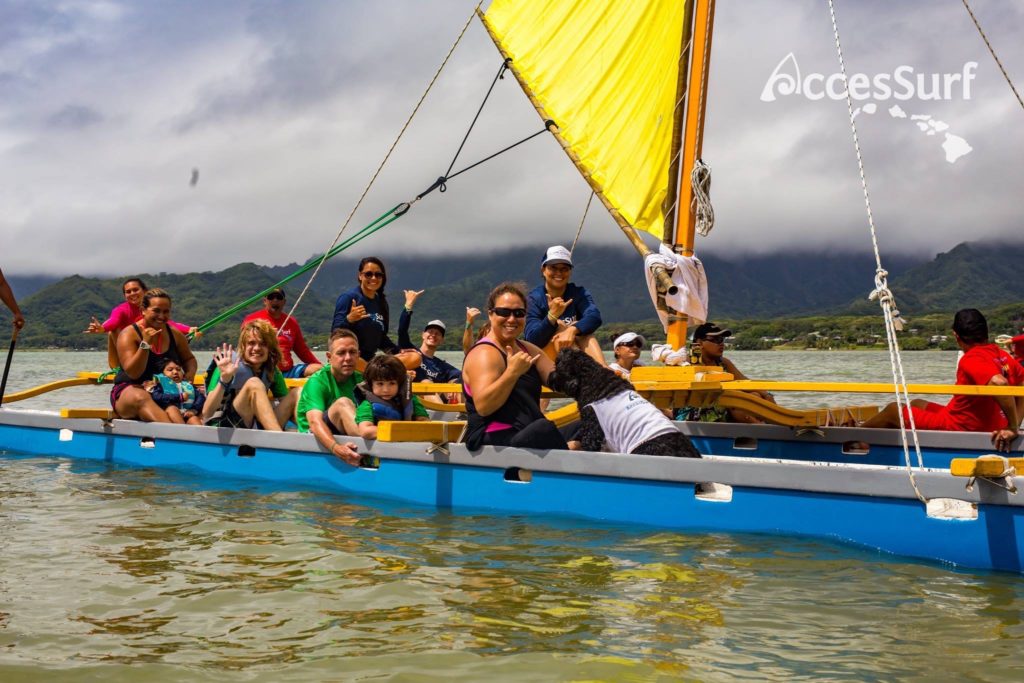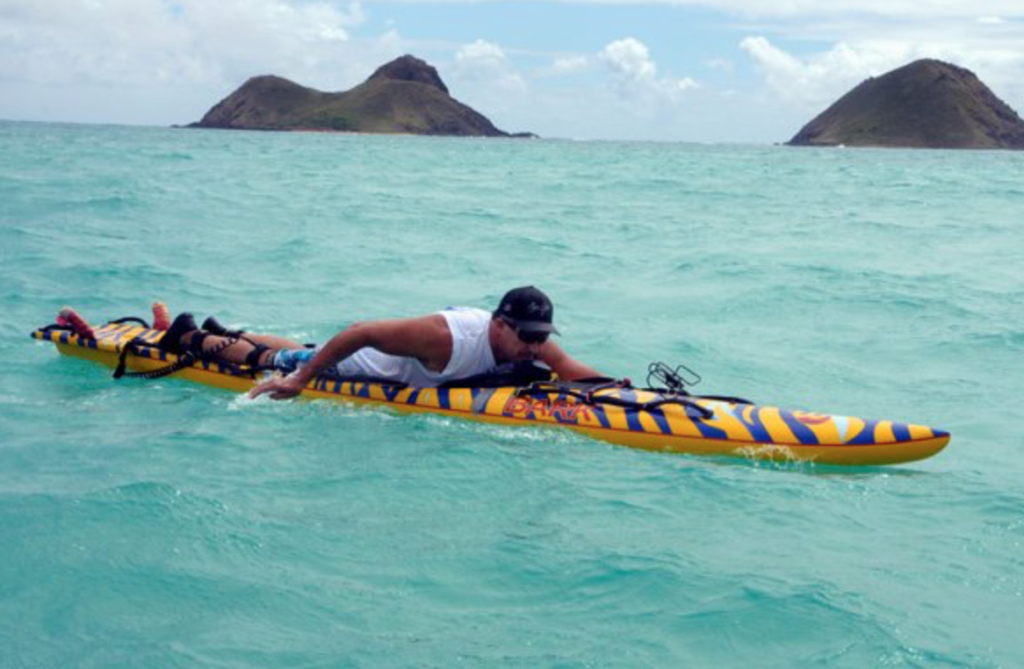AccesSurf offers a variety of paddle sports equipment, support, and training. With the introduction of paddle sports in the 2016 Paralympics, paddling is one of the few activities that can be done across the world.
You will learn the basics of adaptive paddling and the importance of the person, environment, equipment and paddling technique when paddling.
From a six-person outrigger canoe to prone paddling, there are many opportunities to paddle with AccesSurf. During paddle sessions, we maximize the weight-to-strength ratio and practice efficient paddle technique for the individual. Much of the equipment we use is made to position a person in the most supportive state while paddling. Oftentimes we use Active Hands gloves to help a person maintain a grip on a paddle. Most outrigger canoes have bench seats to which we can attach a backrest to help keep a person sufficiently supported to paddle. In kayaks, we use a high back seat and other equipment to augment an individual’s ability to paddle independently or with a volunteer. Additionally, we use a variety of foam to position a person’s neck, chest, or hips to get the most advantage for a paddle stroke. For prone paddling, we use specialized paddle boards that are more stable and have a custom padding setup to help position a person in the most ergonomic manner for paddling.
The world of adaptive paddling can appear daunting at first, to both the participant as well as the volunteer. As volunteers, we all have the fear of “doing something wrong” or of injuring an individual. Each individual we work with is unique. Our job is to adapt what we teach, how we teach, and the equipment we use to match each individual and their unique situation. For example, the AccesSurfer with a high-level spinal cord injury will not be able to rotate their torso. Adapting our methods of communication, activity, and equipment, we encourage a paddling technique that is tailored to the individual’s way of paddling and de-emphasizes the torso rotation traditionally used in paddling. Volunteers should consider adapting the equipment, teaching style & techniques, and choice of paddling venue. However, participants must ultimately choose for themselves whether to adapt their own learning style and attitude. We are here to create a safe environment and present paddle opportunities to our AccessPaddlers. The most important consideration for all adaptive sports starts with considering the environment. The environment must be conducive to learning needs, comfortable, and free of avoidable hazards. The paddling venue should be sheltered and relatively free of hazards on shore as well as in or on the water. It is often best to introduce new paddlers to the sport in flat, low-wind conditions.

Ask a lot of questions. Some things may be obvious to you, while to others they may not be. Good questions to ask before the session include:
- Are you comfortable in water and do you like to swim?
- Do you mind getting wet or would you rather not?
- Are you able to grip the paddle?
- Have you paddled before?
- What mobility issues do you have?
- Do you have any loss of sensation or feeling?
- Are you overly sensitive to heat or cold?
- Do you need to use the restroom before we start?
Some of the abilities to identify from an AccessPaddler before getting out in the water include the capacity to:
- Breathe independently (i.e., not require medical devices to sustain breathing. See profiler for further assessment.)
- Independently maintain sealed airway passages while under water
- Independently hold head upright without neck/head support
- Manage personal care independently, or with assistance of a companion
- Manage personal mobility independently, or with a reasonable amount of assistance
- Follow instructions and effectively communicate independently or with assistance of a companion
- Independently turn from face-down to face-up, and remain floating face-up while wearing a PFD
- Independently get in/out of a paddle craft or with a reasonable amount of assistance*
- Independently get out and from under a hula paddlecraft*
- Independently re-enter the paddlecraft following deepwater huli or with a reasonable amount of assistance
- Maintain a safe body position while attempting skills, activities, and rescues, as well as have the ability to recognize and identify to others when such efforts would be unsafe given the participant’s personal situation

For more information about adaptive paddling visit the ICF Paracanoe site.

